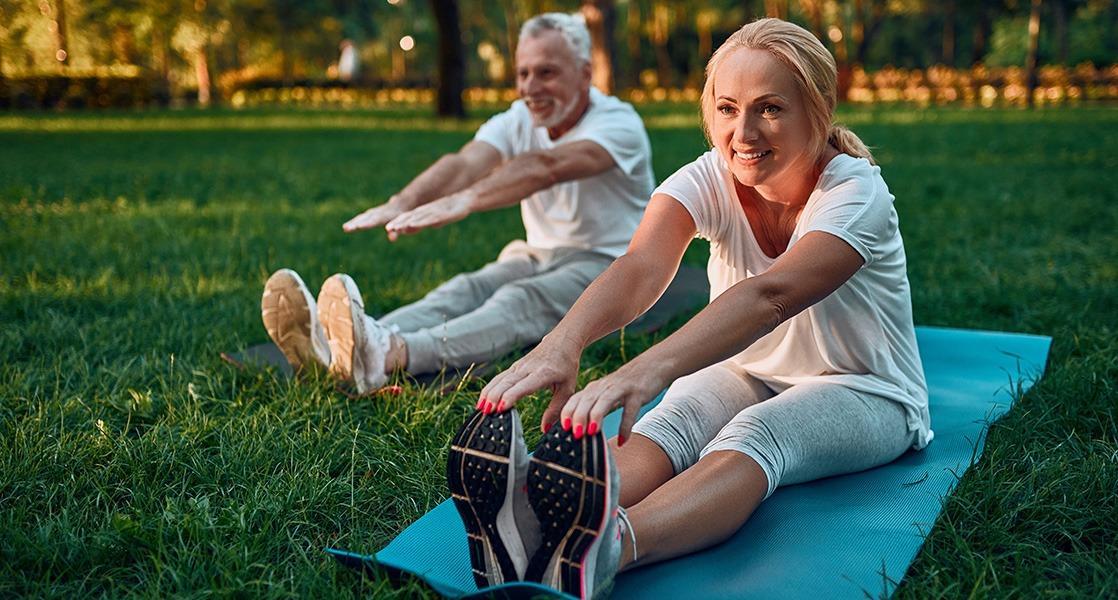As we navigate the ever-changing landscape of aging, the quest for longevity and vitality becomes increasingly paramount. With each passing year, the notion of growing older no longer carries the stigma it once did; instead, it presents an opportunity for growth, exploration, and wisdom. However, navigating the complexities of health and wellness in our later years can be daunting. This is where effective strategies for healthy aging come into play. In this serious guide, we’ll delve into practical, evidence-based approaches that can enhance both physical and mental well-being. From nutrition and exercise to social engagement and preventative care, we will explore key strategies that not only promote longevity but also foster a fulfilling, enriching existence. Join us as we embark on this important journey toward a healthier, more vibrant life in our golden years.
Table of Contents
- Nutritional Foundations for Longevity and Wellness
- Incorporating Physical Activity into Daily Routines
- Mental Resilience: Cultivating a Strong Mind as You Age
- Building Strong Social Connections for Enhanced Well-Being
- Concluding Remarks
Nutritional Foundations for Longevity and Wellness
The foundation for a healthy, long life begins with the right nutritional choices. Prioritizing whole, nutrient-dense foods is essential for maintaining energy levels and promoting optimal health. Focus on incorporating a variety of fruits, vegetables, and whole grains into your diet to ensure you receive a broad spectrum of vitamins, minerals, and antioxidants. These foods are rich in fiber, which not only supports digestive health but also helps to manage appetite and maintain a healthy weight. To maximize longevity, consider the following:
- Lean Proteins: Include sources like fish, poultry, legumes, and nuts to support muscle mass.
- Healthy Fats: Opt for unsaturated fats from sources such as olive oil, avocados, and fatty fish to reduce inflammation.
- Hydration: Aim to drink plenty of water throughout the day to support bodily functions.
In addition to what we eat, the timing of meals plays a crucial role in our overall wellness. Adopting a balanced approach to meal frequency can help regulate metabolism and maintain healthy blood sugar levels. A useful practice is intermittent fasting, which allows your body time to repair and rejuvenate while reducing the risk of chronic diseases. Below is a simple table outlining daily meal timing strategies:
| Strategy | Description |
|---|---|
| 16/8 Method | Eat during an 8-hour window and fast for 16 hours. |
| 5:2 Diet | Normal eating for five days, followed by a reduced-calorie intake for two days. |
| Alternate-Day Fasting | Fast every other day or significantly reduce calorie intake. |
Incorporating Physical Activity into Daily Routines

Incorporating physical activity into our daily routines is essential for maintaining health and vitality as we age. Simple adjustments to everyday tasks can significantly enhance our overall fitness level. For instance, consider the following strategies:
- Take the Stairs: Opt for stairs instead of elevators whenever possible. It’s a quick way to fit in a cardio workout.
- Walking Meetings: If you have a meeting that doesn’t require a computer, suggest a walking meeting. This keeps the body active and invigorates creativity.
- Household Chores: Turn chores like vacuuming, gardening, or even washing the car into a thorough workout. They can be surprisingly effective at keeping you moving.
- Set Reminders: Use your phone or digital calendars to remind you to stand up and stretch or take a short walk every hour.
Additionally, it’s helpful to incorporate structured physical activities into your week. Aim for a combination of aerobic, strength, and flexibility exercises that engage different muscle groups. A feasible schedule could look like this:
| Day | Activity | Duration |
|---|---|---|
| Monday | Strength Training | 30 mins |
| Wednesday | Yoga or Stretching | 25 mins |
| Friday | Brisk Walking or Cycling | 40 mins |
| Weekend | Outdoor Activities (hiking, swimming) | 1 hour |
By intentionally weaving physical activity into your daily life and adhering to a well-rounded schedule, you can not only boost your physical health but also enhance your mood and mental clarity, paving the way for healthier aging.
Mental Resilience: Cultivating a Strong Mind as You Age
Mental resilience plays a vital role as we navigate the complexities of aging. Strengthening our ability to cope with stress, adapt to change, and recover from adversity can significantly enhance our overall well-being. Here are some effective approaches to achieve this:
- Mindfulness Meditation: Engaging in regular mindfulness practices can help cultivate a more profound sense of self-awareness and reduce anxiety.
- Challenge Negative Thoughts: Counteracting negative self-talk with positive affirmations can reshape our mindset and promote optimism.
- Continuous Learning: Keeping the mind active through reading, courses, or hobbies stimulates cognitive function and fosters a sense of purpose.
- Social Connections: Maintaining strong relationships and engaging in meaningful conversations bolsters emotional support and enhances resilience.
Another effective strategy is establishing a routine that incorporates physical health, which directly impacts mental strength. Regular exercise, even moderate activities like walking, can heighten mood and improve brain function. Consider the following practices:
| Activity | Frequency | Benefits |
|---|---|---|
| Walking | Daily | Boosts mood and enhances cardiovascular health. |
| Yoga | 3 times a week | Improves flexibility and reduces stress levels. |
| Social Clubs | Weekly | Fosters connections and combats loneliness. |
Building Strong Social Connections for Enhanced Well-Being
As we navigate the journey of aging, the strength of our social connections can significantly influence our overall well-being. Research consistently shows that maintaining robust relationships can lead to improved mental health, increased longevity, and a richer quality of life. To harness these benefits, consider implementing the following strategies:
- Join Community Groups: Participate in local clubs or organizations that align with your interests, such as book clubs, gardening groups, or fitness classes.
- Volunteer: Giving back to the community not only fosters new friendships but also provides a sense of purpose.
- Reconnect with Old Friends: Reach out to former colleagues or friends and arrange regular meet-ups or virtual catch-ups.
- Prioritize Family Time: Schedule consistent family gatherings to strengthen bonds and create lasting memories.
Moreover, nurturing these connections requires effort and intention. Setting personal goals for social engagement can help maintain motivation. Consider tracking your interactions and setting milestones to celebrate progress in building your network. A simple table can serve as a reminder of your commitments:
| Activity | Frequency | Goal |
|---|---|---|
| Join a Local Club | Once a week | Meet 5 new people |
| Volunteer | Twice a month | Engage with 10 community members |
| Family Dinners | Monthly | Create new traditions |
Concluding Remarks
As we reach the conclusion of our exploration into effective strategies for healthy aging, it’s clear that aging is not merely an inevitability but a journey that can be navigated with intention and purpose. By embracing a holistic approach that incorporates physical activity, nutritional awareness, mental health, and social connections, we empower ourselves to not only age gracefully but to thrive in our later years.
Remember, it’s never too late to make positive changes. Whether you incorporate more fruits and vegetables into your diet, pick up a new hobby to keep your mind engaged, or simply prioritize quality time with loved ones, every small step contributes to a healthier you.
Aging is a testament to the vibrant life you’ve lived, and with the right strategies in place, it can also be a period filled with vitality and joy. Thank you for joining us on this journey. Here’s to embracing the future with confidence, resilience, and a commitment to making the most of every stage of life. Let’s continue to prioritize our health, not just for ourselves, but for those we love as well.



